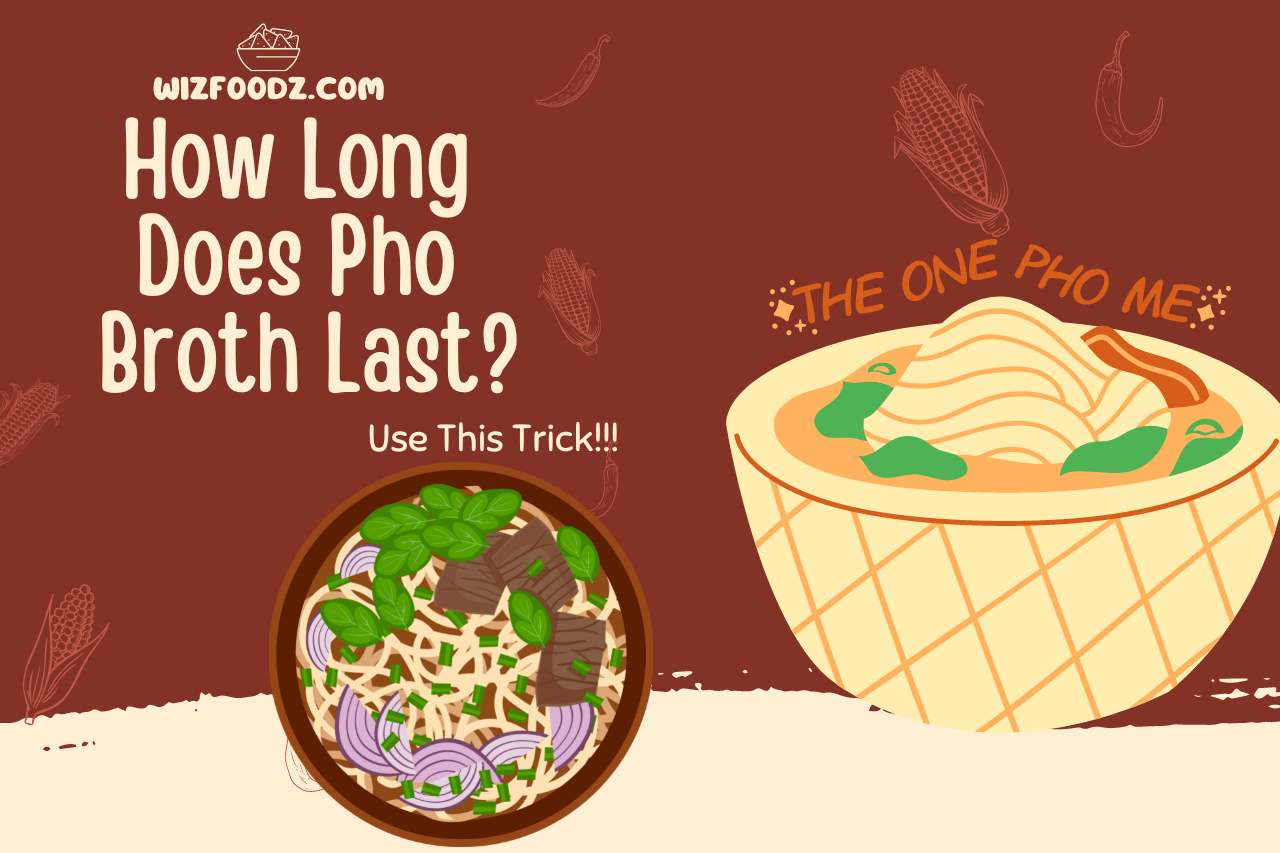Pho is a popular Vietnamese rich and heavy soup that contains delicate and flat rice noodles, broth, meat, and other herbs. Pho is a common soup dish that is authentically served in all houses, restaurants, and street stalls. The first people to create this traditional soup were the residents of Nam Dinh city. The main flavors come from meat and herbs, and spice, including cloves, star anise, pepper, etc.
In this article, we will cruise you through all your doubts and curiosity over the pho broth. We will discuss what pho broth is, how it’s made, and how long does the pho broth last.
What is Pho Broth?
The pho broth, mostly made for breakfast, is a steamy bowl of soup with delicate noodles that is a loved and adored cuisine in the traditional Vietnamese culture.
This soup is a comfort food and is known to be the national dish of Vietnam. This protein-rich soup is made of beef, rice noodles, broth, onion, garlic, and other spices and herbs. There is a variety of pho today, which includes beef pho, vegetable pho, and chicken pho.
Many people make mixed cultural dishes by twisting the traditional pho recipe. There is no specific authentic dish for pho, and many people have their unique twist on the dish personalized to their tastes and preferences. The western world has created its own version of the dish as well.
The pho broth is served in a deep bowl with raw meat and rice noodles, and broth is poured on top of it. In addition, you can add your favorite toppings to the recipe. This broth or soup is consumed with both chopsticks and a spoon.
How is Pho Broth Made?
Now that we know what pho broth is. Let’s see how the soup is made. As said earlier, we cannot use an exact recipe to make the soup.
The people from the north and south of Vietnam have their own style of preparing this dish.
The variations are too many based on the region in which it is made.
Let’s examine the most basic ingredients and the method of preparing this delicious and rich soup.
Ingredients for the pho broth;
- The beef broth is made of beef and bones spiced with star anise, cloves, cinnamon, and other spices.
- Flat and delicate rice noodles separately cooked
- Toppings- the toppings do not have a specific mix. One can go the extra mile and be creative with their topping choices. The most common toppings include bean sprouts, hot sauce, fresh herbs, and other colorful vegetables.
- Sliced beef and chicken- raw meat is placed into the pho bowl by cutting them into thin slices. One can replace it with mushrooms or cooked chicken as well.
- Spices and herbs- star anise, pepper, ginger, onion, garlic, cinnamon, fennel, coriander, and many more as desired to suit your preference.
Now let’s get into the making of pho broth;
- The first step is to remove all the impurities from the beef by quickly boiling the beef for about 5 minutes. Next, sum the residues out of the broth and bones by washing them off.
- Now place a pan on the heat with water, the beef and bones, onion, garlic, ginger, and spices that include cardamom, cinnamon, coriander, and star anise. And simmer the ingredients in the pan for around 3 hours.
- Next, remove all the brisket, leave only the bones in the pan, and let it simmer for around 40 minutes more.
- Finally, strain the broth into the noodles bowl and place the thinly sliced beef and rice noodles cooked separately along with your favorite toppings and serve.
How Long Does Pho Broth Last?
A lot of you must be wondering how long pho broth last. Pho tends to spoil very fast due to the type of ingredients used in it.
If you can separate the broth from the solid ingredients, the broth can last from 5 to 7 days, while the meat, noodles, and toppings can only last for nearly two days.
When the pho broth is refrigerated, it can be consumed as fresh as new for 3 to 4 days. When all three main ingredients are separated, the broth alone can be stored for three months.
If the broth is left to freeze in the refrigerator, it can be stored for six months without spoiling, but it is not recommended.
The leftover broth from the previous day can be microwaved and reheated in a pot for the next day.
Is Pho Broth a Bone Broth?
Yes, absolutely. The bone broth used to make the pho soup is everything special about it.
The bone is a must and the most important ingredient of the soup. It cannot be replaced with any other option.
The thick, rich, heavy broth is made into an absolute magic potion by simmering the bones and meat and the wonderful aromatic spices and herbs into this popular comfy soup.
One can replace the beef used in the soup with chicken and mushrooms as well.

Is Pho Good for your Gut Health?
Yes, pho is famously very good for your gut health. The pho broth, traditionally infused with many fresh and natural ingredients, is a definite boost to your gut health.
It contains many spices and herbs that act as anti-inflammatory enzymes. The rich and dense, nutrient-filled balanced diet promotes clean gut health, detoxifying the toxins collected in the body, boosting immunity, and aiding proper digestion of food in the body.
The collagen found in the broth is essential for gut tissue damage repair and for rejuvenating new tissues inside and on the outer skin of the body.
It has been reported that the pho broth can help heal leaky gut syndrome, IBS and also ulcers, and Crohn’s disease.
Why is Pho So Popular?
Pho is very special and popular in the traditional Vietnamese world for its unique and delicious ingredient combination. This Vietnamese cuisine is an explosion of rich flavors, aromas, and tastes.
There are several factors that make this silky broth so popular in Vietnam as a staple food and around the world as a fancy dish. This dish is popular for its fresh ingredients that do not include any artificial ingredients or preservatives, or processed food.
Another reason for its popularity is its ingredients cover the three main essential nutrients fat, protein, and carbohydrate.
Pho can be consumed at any time of the day and is found in many countries easily. Today there are many variations like shrimp pho, pho meatballs, pho special, pho chicken, etc.
Watch this video,
Video Credits – Marion’s Kitchen
You May Also Like





